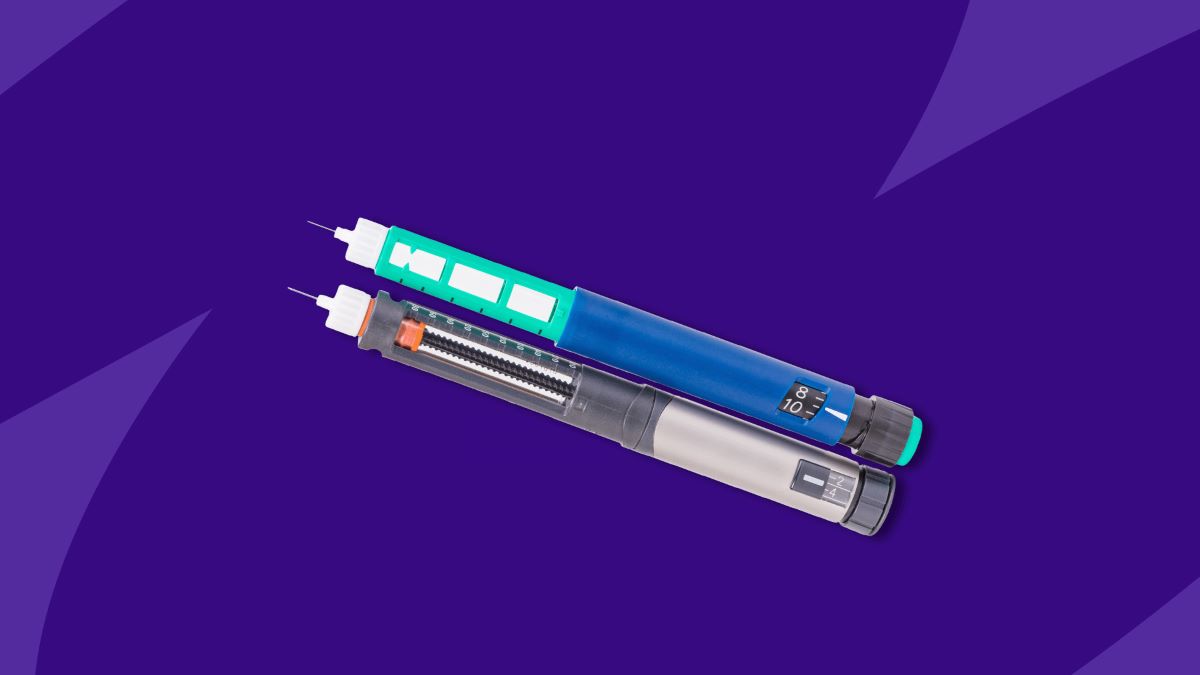

Finance
How To Get Saxenda Covered By Insurance
Published: November 6, 2023
Learn how to get Saxenda covered by insurance and save money on your weight loss journey. Our finance experts provide tips and guidance to help you navigate the insurance process.
(Many of the links in this article redirect to a specific reviewed product. Your purchase of these products through affiliate links helps to generate commission for LiveWell, at no extra cost. Learn more)
Table of Contents
- Introduction
- Understanding Saxenda
- Insurance Coverage for Weight Loss Medications
- Determining if Saxenda is Covered by Your Insurance
- Steps to Get Saxenda Covered by Insurance
- Review Your Insurance Policy
- Consult Your Healthcare Provider
- Gather Necessary Documentation
- Submit a Prior Authorization Request
- Follow Up with Your Insurance Provider
- Appeal Any Denials
- Conclusion
Introduction
Welcome to the world of weight loss medications. If you’re struggling to lose weight and have been considering Saxenda as a potential solution, you may have wondered if it’s covered by your insurance. Saxenda, a brand name for the generic medication liraglutide, is an FDA-approved injectable medication used to treat obesity in adults when combined with diet and exercise.
Understanding the complex landscape of insurance coverage for weight loss medications can be overwhelming. The good news is that many insurance plans do provide coverage for Saxenda, but the process of obtaining coverage may require some legwork on your part. In this article, we’ll explore the steps you can take to increase your chances of getting Saxenda covered by insurance.
Before delving into the nitty-gritty details, it’s essential to have a clear understanding of Saxenda and why it may be the right choice for you. Saxenda works by slowing down the movement of food through your stomach and increasing feelings of fullness, ultimately helping you to eat less and lose weight.
Weight loss medications like Saxenda can be a valuable tool in your weight loss journey, but the costs can often be prohibitive. That’s where insurance coverage becomes crucial. Understanding the coverage provided by your insurance plan can make a significant difference in the affordability and accessibility of Saxenda.
Let’s dive deeper into the process of determining if Saxenda is covered by your insurance, and the steps you can follow to increase the likelihood of getting it covered.
Understanding Saxenda
Saxenda, also known by its generic name liraglutide, is an injectable medication approved by the FDA for the treatment of obesity in adults. It belongs to a class of drugs called GLP-1 receptor agonists, which work by mimicking the effects of a hormone called glucagon-like peptide-1 (GLP-1) in the body.
GLP-1 is naturally produced in the intestines and helps regulate blood sugar levels, control appetite, and slow down the emptying of the stomach. By administering Saxenda, these effects are enhanced, leading to a reduced appetite and a feeling of fullness that can help individuals eat less and lose weight.
It’s important to note that Saxenda is not a magic pill for weight loss. It is intended to be used as part of a comprehensive weight loss program that includes a reduced-calorie diet and increased physical activity. The medication is typically prescribed to individuals with a body mass index (BMI) of 30 or higher, or those with a BMI of 27 or higher who also have weight-related comorbidities, such as high blood pressure or type 2 diabetes.
Weight loss with Saxenda is gradual and occurs over time. It is important to set realistic expectations and understand that it is not a quick fix solution. While taking Saxenda, it’s essential to follow your healthcare provider’s instructions and attend regular check-ups to monitor your progress and manage any potential side effects.
Common side effects of Saxenda include nausea, diarrhea, constipation, vomiting, and low blood sugar (hypoglycemia). Serious side effects are rare but may include pancreatitis, gallbladder problems, and thyroid tumors. It is important to discuss all potential risks and benefits with your healthcare provider before starting Saxenda.
Now that you have a better understanding of Saxenda, let’s explore how insurance coverage for weight loss medications works and how you can determine if Saxenda is covered by your insurance.
Insurance Coverage for Weight Loss Medications
Insurance coverage for weight loss medications can vary depending on your specific insurance plan and the guidelines set by your insurance provider. While some insurance plans may offer comprehensive coverage for weight loss medications, others may have more restrictive policies or require specific criteria to be met.
It’s important to review your insurance policy or contact your insurance provider to understand the coverage details for weight loss medications. Many insurance plans categorize weight loss medications as “non-formulary” drugs, meaning they are not automatically covered and may require additional steps to obtain coverage.
In general, insurance plans may have certain criteria to determine coverage for weight loss medications. These criteria may include having a BMI above a specific threshold, experiencing weight-related health issues, or attempting and failing to lose weight through diet and exercise alone. Some plans may also require documentation from your healthcare provider to support the medical necessity of the weight loss medication.
It’s important to note that insurance coverage for weight loss medications may be subject to deductibles, co-pays, or restrictions on the quantity of medication covered within a specific timeframe. Understanding these details will help you plan for potential out-of-pocket expenses and navigate the approval process.
Additionally, it’s essential to be aware of any prior authorization requirements. Some insurance plans may require prior authorization, which means your healthcare provider needs to submit additional information to the insurance company to demonstrate the medical necessity of the weight loss medication, such as Saxenda.
Now that you know more about insurance coverage for weight loss medications, let’s move on to the steps you can take to determine if Saxenda is covered by your insurance plan and how to increase your chances of getting it covered.
Determining if Saxenda is Covered by Your Insurance
To find out if Saxenda is covered by your insurance, it’s important to review your insurance policy and understand the specific coverage guidelines for weight loss medications. Here are some steps you can take to determine if Saxenda is covered:
- Contact your insurance provider: Start by reaching out to your insurance provider directly. Contact their customer service department or check their website to find information about coverage for weight loss medications. Be prepared to provide the specific medication name (Saxenda or liraglutide) and ask about any requirements or restrictions for coverage.
- Review your insurance policy: Carefully review your insurance policy documents, paying attention to the sections related to prescription drug coverage and weight loss medications. Look for any exclusions or limitations that may impact coverage for Saxenda.
- Speak with your healthcare provider: Consult with your healthcare provider, such as a primary care physician or an endocrinologist, who can provide guidance on insurance coverage for Saxenda. They may have experience with other patients navigating the insurance process and can help determine if Saxenda is a suitable option for you.
- Check for formulary status: Determine if Saxenda is included on your insurance plan’s formulary, which is a list of medications that are covered by the insurance. If Saxenda is not on the formulary, it may still be possible to obtain coverage through a prior authorization process.
- Consult your pharmacy: Speak to a pharmacist at your local pharmacy to inquire about Saxenda coverage under your insurance plan. They can provide information on copay amounts and any special requirements for obtaining the medication.
By following these steps, you can gather crucial information and determine if Saxenda is covered by your insurance plan. If Saxenda is not initially covered or if you encounter challenges, don’t lose hope. There are additional steps you can take to increase your chances of getting Saxenda covered by insurance, which we will explore in the following sections.
Steps to Get Saxenda Covered by Insurance
Obtaining insurance coverage for Saxenda may require some effort and persistence. Here are the steps you can follow to increase your chances of getting Saxenda covered by insurance:
- Review Your Insurance Policy: Carefully read through your insurance policy documents to understand the coverage guidelines for weight loss medications. Pay attention to any requirements, restrictions, or prior authorization processes that may apply.
- Consult Your Healthcare Provider: Schedule an appointment with your healthcare provider, such as a primary care physician or an endocrinologist, to discuss your weight loss goals and the potential need for Saxenda. They can assess your eligibility for Saxenda and provide supportive documentation for your insurance claim.
- Gather Necessary Documentation: Work with your healthcare provider to gather all the necessary documentation to support the medical necessity of Saxenda. This may include medical records, lab results, or evidence of previous attempts at weight loss through diet and exercise.
- Submit a Prior Authorization Request: If Saxenda is not automatically covered by your insurance, your healthcare provider can submit a prior authorization request on your behalf. This request includes all relevant documentation and outlines the medical necessity for Saxenda. Be prepared to follow any additional steps required by your insurance provider, such as completing specific forms or providing additional information.
- Follow Up with Your Insurance Provider: Stay engaged with your insurance provider throughout the process. Follow up on the status of your prior authorization request and inquire about any additional information or documentation needed. Keep detailed records of all communication and correspondence.
- Appeal Any Denials: If your initial request for insurance coverage is denied, don’t be discouraged. You have the right to appeal the decision. Work with your healthcare provider to gather additional supporting documentation and submit an appeal to your insurance provider. Be persistent and advocate for your needs.
Remember, the process of getting Saxenda covered by insurance may take time and perseverance. Stay proactive, stay informed, and don’t hesitate to seek assistance from your healthcare provider or a patient advocacy group if needed.
By following these steps, you can maximize your chances of getting Saxenda covered by your insurance plan, making it more accessible and affordable as you embark on your weight loss journey.
Review Your Insurance Policy
The first step in obtaining insurance coverage for Saxenda is to review your insurance policy. Understanding the coverage guidelines and requirements specific to weight loss medications will help you navigate the process more effectively. Here are some key points to consider:
Prescription Drug Coverage: Familiarize yourself with the prescription drug coverage section of your insurance policy. Look for any specific mentions of weight loss medications or Saxenda.
Formulary List: Check if Saxenda is included on your insurance plan’s formulary. The formulary is a list of medications that are covered by your insurance, and it may categorize medications into different tiers, which can affect the copayments or coverage level.
Exclusions and Limitations: Look for any exclusions or limitations related to weight loss medications in your policy. Some insurance plans may have restrictions based on factors such as BMI, weight-related comorbidities, or previous attempts at weight loss.
Prior Authorization Requirements: Determine if your insurance plan requires prior authorization for Saxenda. Prior authorization is a process where your healthcare provider needs to submit additional documentation to justify the medical necessity of the medication.
Cost Sharing: Take note of any cost-sharing requirements for Saxenda, such as copayments, deductibles, or coinsurance. Understanding these financial obligations will help you plan for potential out-of-pocket expenses.
Reviewing your insurance policy can provide valuable insights into the coverage guidelines for Saxenda and help you understand the steps and requirements involved in obtaining coverage. If you have any questions or need clarification on any policy details, contact your insurance provider directly or consult with your healthcare provider who can assist you in navigating the insurance landscape.
In the next section, we’ll discuss the importance of consulting your healthcare provider and seeking their guidance in determining if Saxenda is the right choice for you and your weight loss journey.
Consult Your Healthcare Provider
When considering the use of Saxenda and seeking insurance coverage, it is crucial to consult with your healthcare provider. Your healthcare provider, such as a primary care physician or an endocrinologist, can provide valuable guidance and support throughout the process. Here’s why consulting your healthcare provider is important:
Evaluation of Eligibility: Your healthcare provider can assess whether Saxenda is a suitable option for you based on factors such as your BMI, weight-related health conditions, and previous attempts at weight loss. They will take into account your overall health and help you determine if Saxenda aligns with your weight loss goals.
Documentation and Medical Necessity: Your healthcare provider can provide the necessary documentation to support the medical necessity of Saxenda. They can document your weight loss efforts, discuss any weight-related health conditions you may have, and explain why Saxenda is an appropriate and necessary treatment option for you. This documentation is crucial when it comes to insurance coverage.
Prior Authorization Submission: If prior authorization is required by your insurance plan, your healthcare provider can handle the submission process on your behalf. They will gather all the necessary information, complete any required forms, and provide supporting documentation to demonstrate the medical necessity of Saxenda.
Expert Advice and Guidance: Your healthcare provider has expertise in weight management and can offer personalized advice and guidance throughout your weight loss journey. They can monitor your progress, adjust your treatment plan if needed, and provide ongoing support to help you achieve your weight loss goals.
During your consultation, be sure to discuss any concerns or questions you have about Saxenda and insurance coverage. Your healthcare provider will be able to clarify any uncertainties and provide you with the necessary information to make informed decisions.
Remember, your healthcare provider is your ally in navigating the insurance process and obtaining coverage for Saxenda. In the next section, we’ll discuss the importance of gathering the necessary documentation to support your insurance claim.
Gather Necessary Documentation
When seeking insurance coverage for Saxenda, it’s important to gather all the necessary documentation to support the medical necessity of the medication. This documentation plays a crucial role in the approval process. Here’s what you need to do:
Medical Records: Compile relevant medical records that demonstrate your history of weight management efforts. This may include documentation of previous diet and exercise attempts, participation in weight loss programs, or records of consultations with healthcare providers related to weight management.
Weight-Related Health Conditions: If you have any weight-related health conditions such as high blood pressure, type 2 diabetes, or sleep apnea, gather medical records that document these conditions. This will help reinforce the medical necessity of Saxenda as a treatment option.
Lab Results: If you have had any recent lab tests related to your weight or weight-related health conditions, gather those results. This may include blood work, cholesterol levels, or any other relevant diagnostic tests.
Previous Medication Trials: If you have tried other weight loss medications in the past that were unsuccessful, gather documentation of those trials. This can include records of medication prescriptions, dosage information, and any notes from your healthcare provider about the outcomes of those trials.
Healthcare Provider’s Letter: Request a letter from your healthcare provider describing your weight loss efforts, any weight-related health conditions, and why Saxenda is medically necessary for you. This letter should outline why alternative weight loss methods have not been effective and provide compelling reasons for insurance coverage.
By organizing and presenting this documentation to your insurance provider, you can strengthen your case for insurance coverage of Saxenda. Be sure to make copies of all your documents and keep them in a secure place for future reference.
In the next section, we’ll discuss the process of submitting a prior authorization request and why it is crucial for getting Saxenda covered by insurance.
Submit a Prior Authorization Request
If Saxenda is not automatically covered by your insurance, the next step is to submit a prior authorization request. A prior authorization is a process where your healthcare provider submits additional information to your insurance provider to justify the medical necessity of Saxenda. Here’s what you need to know:
Work with Your Healthcare Provider: Your healthcare provider will play a crucial role in submitting the prior authorization request. They will gather the necessary documentation, complete any required forms, and provide a letter detailing the medical necessity of Saxenda for your specific case.
Include Supporting Documentation: Make sure all supporting documentation, such as medical records, lab results, and your healthcare provider’s letter, are included with the prior authorization request. These documents reinforce the need for Saxenda as part of your weight loss treatment plan.
Follow Insurance Guidelines: Familiarize yourself with the prior authorization guidelines provided by your insurance provider. This includes understanding the specific information required, any forms to be completed, and any deadline for submitting the request.
Keep Detailed Records: Keep copies of all documents related to the prior authorization request, including confirmation of submission. This will help you track the progress of your request and provide reference in case of any inquiries or appeals.
Follow Up with Your Insurance Provider: After submitting the prior authorization request, follow up with your insurance provider to ensure that they have received all the necessary documentation. Inquire about the expected timeframe for a decision and ask for a point of contact for any further inquiries.
Submitting a prior authorization request is a crucial step in the process of obtaining insurance coverage for Saxenda. It demonstrates the medical necessity of the medication and increases the chances of getting it covered.
In the next section, we’ll discuss the importance of following up with your insurance provider and staying engaged throughout the process of getting Saxenda covered by insurance.
Follow Up with Your Insurance Provider
After submitting a prior authorization request for Saxenda, it’s important to stay engaged and follow up with your insurance provider. This will help ensure that your request is being processed and that you have the necessary information throughout the approval process. Here are some steps to follow:
Confirmation of Receipt: After submitting the prior authorization request, ask your insurance provider for confirmation of receipt. This will give you peace of mind knowing that your request is in their system and being reviewed.
Timelines and Decision: Inquire about the expected timeframe for a decision on the prior authorization request. This will vary depending on your insurance provider, but they should be able to provide you with an estimated timeline for a decision to be made.
Communication Channels: Establish a point of contact at your insurance provider who you can reach out to with any questions or concerns. This could be a specific representative or a dedicated department for pharmacy or prior authorization inquiries.
Document and Track: Keep a record of all communication with your insurance provider. Make note of any phone calls, emails, or other forms of communication, along with the date and the name of the person you spoke to. This record will be helpful in case of any disputes or appeals.
Ask for Updates: If the decision on your prior authorization request is taking longer than expected, don’t hesitate to reach out and ask for an update. Sometimes, a gentle follow-up can help expedite the process.
By staying proactive and following up with your insurance provider, you can ensure that your prior authorization request for Saxenda is being processed and not delayed unnecessarily. Remember, the more engaged you are in the process, the more likely you are to receive a timely decision.
In the next section, we’ll discuss what to do if your prior authorization request is denied and how to appeal the decision.
Appeal Any Denials
If your prior authorization request for Saxenda is denied by your insurance provider, don’t be discouraged. You have the right to appeal their decision and present additional information to support your case. Here are the steps to take when appealing a denial:
Review the Denial Letter: Carefully read through the denial letter from your insurance provider. Understand the specific reasons for the denial and the steps you need to take to initiate an appeal.
Consult Your Healthcare Provider: Discuss the denial with your healthcare provider. They can review the denial letter and help you understand the reasons cited by the insurance provider. They may also provide additional documentation or insight that can strengthen your appeal.
Gather Additional Supporting Documentation: If your prior authorization request was denied, it may be because the insurance provider requires more information to justify the medical necessity of Saxenda. Work with your healthcare provider to gather any additional documentation that supports the use of Saxenda for your weight management needs.
Submit an Appeal: Follow the appeal process outlined by your insurance provider. This typically involves submitting a letter of appeal along with any supporting documentation. Clearly articulate why you believe the denial should be overturned and provide compelling evidence to support your case.
Follow Up and Document: Keep track of all communication related to your appeal. Maintain records of all documents submitted, keep a record of any phone calls or emails, and note the date and the name of the person you spoke to. This documentation will be valuable if further action is needed.
Consider External Support: If your appeal is denied by your insurance provider, consider seeking assistance from an external organization or patient advocacy group. They can provide guidance and support throughout the appeals process and offer resources to help strengthen your case.
Remember, the appeals process can take time, but it is an important step in advocating for your healthcare needs. Be persistent, organized, and provide compelling evidence to support your case. Keep in mind that each insurance provider may have different appeal processes, so be sure to follow the guidelines provided by your specific insurance plan.
By following these steps, you increase your chances of getting Saxenda covered by your insurance plan, even in the face of an initial denial.
Let’s conclude our discussion on obtaining insurance coverage for Saxenda.
Conclusion
Obtaining insurance coverage for Saxenda, a weight loss medication, may seem like a daunting process, but with the right knowledge and steps, it can become more manageable. By following the steps outlined in this guide, you can increase your chances of getting Saxenda covered by your insurance plan.
First, review your insurance policy to understand the coverage guidelines and requirements for weight loss medications. Consult with your healthcare provider who can assess your eligibility for Saxenda and provide the necessary documentation to support your insurance claim.
Gather all the necessary documentation, including medical records, lab results, and a letter from your healthcare provider, to demonstrate the medical necessity of Saxenda. Submit a prior authorization request, follow up with your insurance provider, and, if necessary, appeal any denials with additional supporting information.
Remember to keep detailed records throughout the process and seek external support if needed. Patient advocacy groups or organizations can provide guidance and resources to assist you in navigating the appeals process.
While the process may take time and effort, it’s worth it for potential insurance coverage that can make Saxenda more accessible and affordable for your weight loss journey.
Always remember to consult with your healthcare provider for personalized advice and guidance throughout your weight loss journey. They can provide ongoing support, monitor your progress, and adjust your treatment plan as needed.
With determination, persistence, and the support of your healthcare provider, you can navigate the insurance process and increase your chances of getting Saxenda covered by your insurance. Take control of your weight loss journey and explore the possibilities that Saxenda can offer in achieving your goals of a healthier, happier you.














